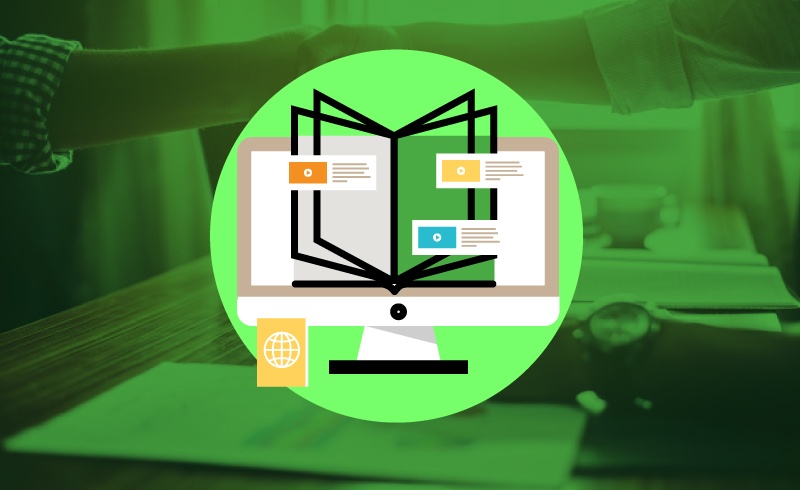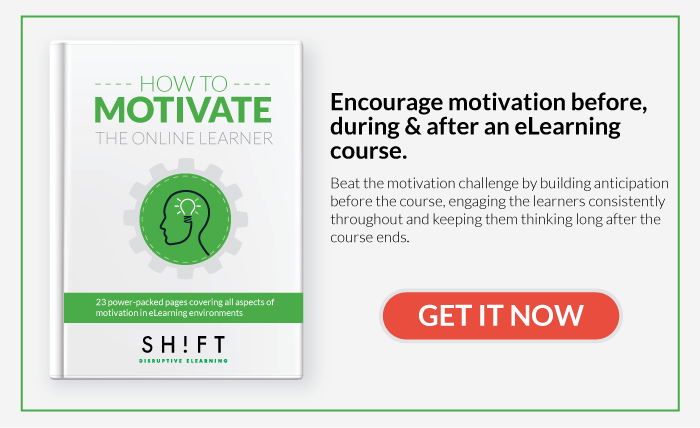Customers are the lifeblood of any business. Naturally, then, it makes sense to do everything you can to obtain new customers and retain the existing ones. What better way to do this than help them get the most value out of your organization’s product or service? Providing customer training is an excellent way to do just that, by enhancing their use and enjoyment of the products you offer.
When studies were conducted back in 2012, researchers at Brandon Hall found that over half of all organizations were offering training for their customers and business partners. They noted that it was a powerful customer retention and development tactic, and one that you should seriously consider implementing in your organization if you haven’t already.
Training Your Customers Using eLearning
The benefits of training your customers through eLearning, live tutorials or online resources are numerous. In addition to helping customers use your product or service most effectively, this type of training can:
- Lower customer support team costs
- Improve customer satisfaction
- Enable upselling
- Speed up onboarding and decrease churn
Online product training is also one of the most cost-effective ways to provide this type of support for your customers. There are several options available, including:
- Bite-sized eLearning modules that train customers on specific features of your product.
- An online library of articles, how-to videos, and recorded webinars about common difficulties and recommended solutions.
- Targeted Mobile Learning courses that users can access for particularly problematic tasks associated with your product or service at the point of need.
Because of these and other potential benefits, training customers online can have a direct positive effect on your company’s bottom line. This makes it a comparatively easier sell to your management team than you might have expected.
P.S. And don’t wait for your customers to ask you for training! Take the initiative to identify what course material will be the most important for your customers’ business outcomes.

Best Practices in Online Customer Training:
1) Modular, Short and On-Demand:
This practice is the same as with your employee training and development.Customers want to learn on their own schedules, they want to review the content as many times as necessary, and need to quickly find the material they need to know. So, keep things short and easy to absorb by only covering one major content area in each module. Get right to the point. They already own your product, so don’t spend time trying to sell them!
Also, allow your customers to learn at their own pace. Every time a question pops up their mind, they should have the resources easily available.
2) Train Early:
Don’t wait for your customers to come to you with questions and problems. Make it a priority to sign them up for introductory training when they initially make their purchase. Training early in the customer cycle will produce a smooth implementation, and reduce problems down the road. Also, develop a system to follow-up with your customers at various milestones.
3) Humanize:
Stay away from technical terms and jargon (use these only when needed). Let your customers experience an intuitive and pleasing training experience that treats them like people, not robots. Keep it compelling and engaging by combining videos, pictures, text, and interactive dialogue (e.g., a question and answer format).
4) Personalized Learning Pathways:
What is so fantastic about eLearning is that you can offer different levels of training depending on the sophistication and preferences of your customers. Offer different formats to meet the needs of different customers. For example, some may prefer self-paced training, where others may want a structured approach. Since not all customers are going to need all aspects of your training, avoid generic or “form letter” approaches that may actually offend some of your customers. Building good customer relationships depends on identifying differences and treating each customer according to their individual needs.
Read more: The Rapid Rise of Learning Pathways
5) Embrace Video:
Engage your learners by creating video clips, rather than strictly text-based training. Short videos are easy to produce, with nothing more than the camera in your smart phone and some editing software.
Some ideas:
- Demos: No matter how detailed a step-by-step guide is, following it in written is almost always hectic. A better way to educate your learners about using new software or a new feature is by creating a short demo video. Apart from software, demos videos are a great way for capturing business or technical processes and best practices. A good way for increasing engagement (and making it fun) is to enlist a company employee to demonstrate how the product can be used or the process executed.
- Video-tours: Create a tour of your office premises, facilities, or campus. It is great for introducing employees to new facilities, or inspiring confidence in onboarding employees.
- Animated videos: Animated videos allow boundless opportunities for creatively exploring concepts. It allows the audience to interact with the course material in new ways and hence increases engagement.
Read more: 9 Ways to Use Video in Your Online Training Courses
6) Mobilize:
Customers appreciate the ability to learn whenever and wherever they want. For this reason, it’s important that your customer training can be accessed from your customers’ personal mobile devices. Mobile learning is becoming an indispensable part of any customer learning strategy.
Understanding WHEN your learners are turning to their phones will prove extremely useful to making the learning experience valuable.
Dr. Conrad Gottfredson and Bob Mosher’s Five Distinct Moments of Need have best identified when learning is sought out. According to them, these Five Moments of Need motivate learners:
- When they are learning an aspect for the first time (New)
- When they want to deep-dive into a topic (More)
- When they want to apply or remember something (Apply)
- When they need to solve a problem or fix something that has gone wrong (Solve).
- When something changes (Change)
Read more: Road Map to Success: Mobile Learning Essentials
Your goal should be to support your customers with content throughout the entire product lifecycle. The only effective way to do this is by asking for feedback, and adjusting your content development and delivery based on what they have to say.
Not all customers need the same things, however, so you’ll need to group or segment them based on various characteristics, for example:
- Length of time they’ve been a customer
- Type of customer
- Number of training modules completed
Finally, stay in touch with your customers to make sure they are having a good experience with your training. If you haven’t heard from them in a while, take the initiative to find out why. You may need to remind them of the benefits of training or help with technical issues.
Consulted sources:
https://www.inc.com/donna-wells/when-it-comes-to-customers-train-to-retain.html
https://elearningindustry.com/getting-started-customer-product-training
https://www.trainingzone.co.uk/community/blogs/wiziq/incentivize-your-customers-to-complete-training


